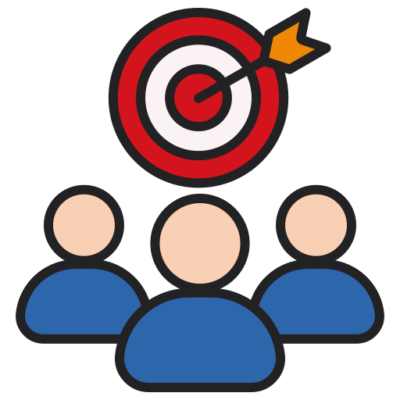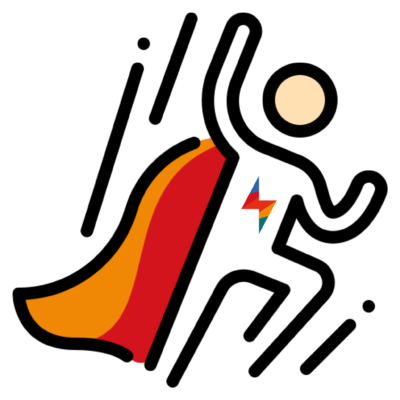A crucial part in setting up a learning program in your organisation is getting all your employees on board. Some might not see the need for it in the first place, while others might not want to spend their time on it. Any kind of change often feels like a chore. We’ve selected 5 tips that will help increase internal engagement when developing a learning program.
1. Create a thriving learning culture
The Corporate Executive Board (CEB) reported in 2015 that only about 1 in 10 companies builds a learning culture for themselves. Tip number one? Push the envelope and get started already!
A learning culture provides conditions that support an open mindset for employees, by encouraging an independent search for knowledge and welcoming ‘shared learning’ that focuses not only on the mission but also on the goals of an organization.
You want learning, or professional and personal improvement to become second nature to your company. This continuous learning includes offering new trainings, cultivating and broadening the professional network, sharing experiences, etc. Nurture your employees with a ‘growth’ mindset to see the opportunities and offer them choices in what, when and how to learn.
Creation is only the first step, as maintaining this learning culture is even more crucial. Invest in new trainings and update the already established ones. FLOWSPARKS can help you with setting up an e-Learning program.
Our Customer Success Coach Paulien explains here in more detail how to develop a learning culture within your organisation.

2. Develop with your audience in mind
When you develop your e-Learning you must have in mind what ‘learners’ you have in your organisation.
First, what skills, information and insights do the participants need to acquire? Learners, no matter how motivated at first, will soon feel frustrated when the material does not reflect their reality. It’s never a fun feeling when it seems like you are wasting your time.
Use ‘subject matter experts’ to build the content of your e-Learning, since they know what’s relevant and have the required expertise. With FLOWSPARKS, it is even easier for these experts to help you build the materials. In this blog, Customer Success Coach Tiffany gives some steps how to involve your Subject Matter Experts.
But that’s not all: involve your audience in the development process as well. Let them provide feedback and tell you how the training can be improved in their opinion.
Next, what are the technical abilities of your learners? If you’re trying to reach a group who mainly uses smartphone or tablet devices, this is something to consider when developing an e-Learning. Do all your participants have a company email address?

FLOWSPARKS takes care of many of these technical hurdles. The different templates scale seamlessly between different devices, like mobile, or desktop.
Finally, make learning fun. Retention of information increases when the learning is connected to ‘pleasant’ or entertaining activities. Adding gamification will increase the motivation to continue the e-learning, especially when this includes a competition against other team members. Think of alternative learning methods or give rewards for completing the training. Let FLOWSPARKS help you with these educational practices.
3. Create ‘super users’
When trying to increase the internal engagement in relation to e-Learning, it is very valuable to have your own e-Learning ‘super users’. Have people who are enthusiastic about learning and teaching, and who can pass on their enthusiasm to others.
We recommend having a few people in the organisation who are familiar with FLOWSPARKS. They are an easy to reach support unit when users and potential authors have questions. They too will help make an e-Learning more engaging, efficient and attractive.

4. Dare to go hybrid
Switching from the classical classroom-based model to an online model of training has many advantages. In terms of organisation, online trainings are easier to arrange, and the financial overhead of trainers and classrooms is reduced as well.
However, that does not mean offline learning has to go away completely. Studies show, again and again, that hybrid training can be a very effective training method, i.e. when there is a combination of both online and offline training.
You can start with a training in the classroom and have learners continue online afterwards, where they practice the learned content at their own pace. Repetition is after all another great way to increase retention of information.
Another approach is ‘flipping the classroom’, where the initial transfer of information is done through e-Learning. Then, afterwards, the learners get together in the classroom and practice what they learned in their own time. The trainer or even other participants can then correct any misconceptions.
This hybrid approach decreases valuable trainer time, and it can also take away some internal resistance to the change e-Learning brings. It isn’t a radical change anymore, but an improvement of the (existing) learning experience.

5. Be the coach of L&D
As the volume of e learning increases, it might appear daunting to manage the growing expectations of your learners. In fact, you might find your role changing into a coaching role, rather than just didactic development, in which you help people navigate courses and programs and make sure they take full advantage of their own learning journey.
By collecting and analysing user data, you can identify potential skill gaps and react to them in time. You will be able to coach employees to take note of and harness their own passions and purpose. You can plan out their course with a combination of self-directed and curated learnings.

Looking for a SaaS e-Learning platform that has all the tools to help motivate your employees?
Do you find it hard to motivate your learners? Have a look at how the SaaS e-Learning software from FLOWSPARKS can help you. Request your free demo here to see what FLOWSPARKS can do for you.

